Colorful Auroras Could Appear Tonight in U.S. as Solar Storm Races to Earth
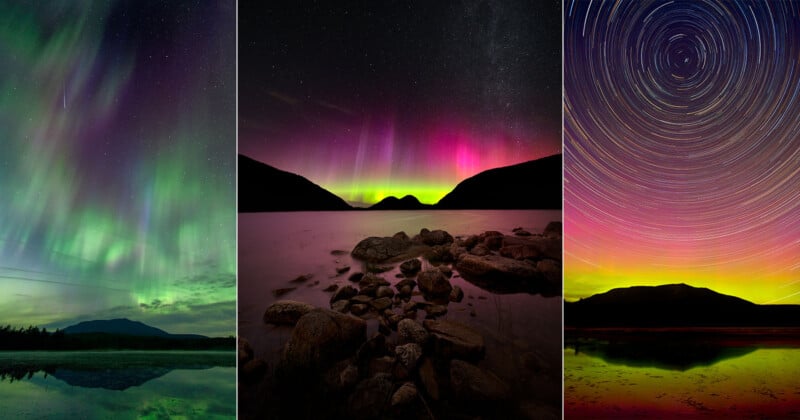
Thanks to a powerful solar storm, photographers at high latitudes may be treated to fantastic northern lights displays tonight in the United States and Canada.
Everything must be perfect to capture incredible aurora shots, including the Moon’s phase and position, weather, and, most importantly, intense geomagnetic activity, but there is reason for optimism as a cannibal coronal mass ejection (CME) is slated to strike Earth tonight, early on December 1st.
Per SpaceWeather.com, a leading resource for the latest information on the Sun-Earth environment and aurora forecasts, cannibal CMEs form “when a fast CME sweeps up a slower CME ahead of it,” which can lead to “intense, tangled magnetic fields that can do a good job sparking auroras when they reach Earth.”
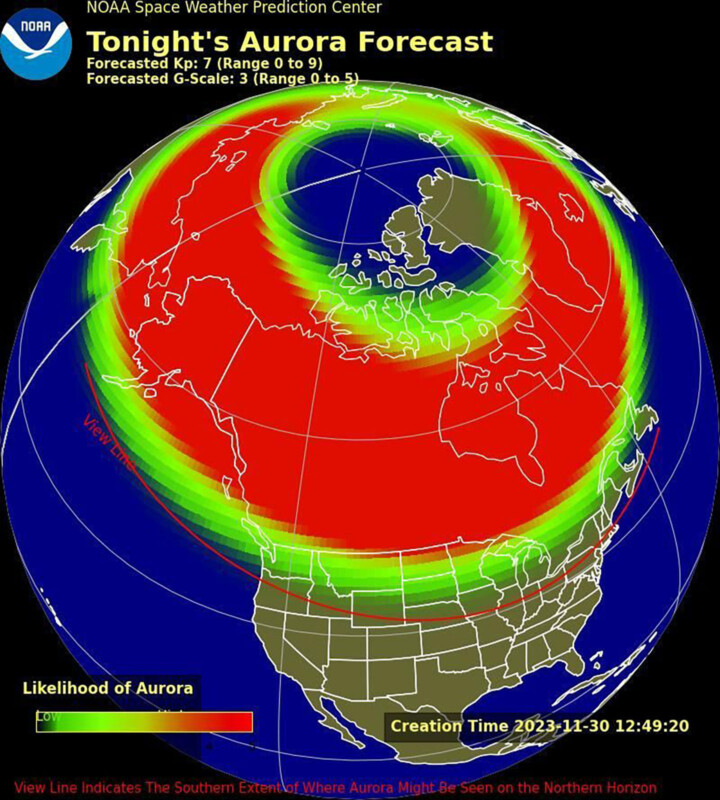
Based on current forecasting, geomagnetic storms could reach category G3 (strong) and a planetary K-index (Kp) of 7 — which is very high. The K-index scale ranges from zero to nine, and relates to the maximum fluctuation in the geomagnetic field relative to a quiet day during a three-hour interval. The higher the Kp, the more active the geomagnetic storm activity, and the more likely visible auroral displays will be.
With a Kp of seven, it is possible that, given the proper night sky and weather conditions, someone could see the northern lights at latitudes throughout much of the northern United States.
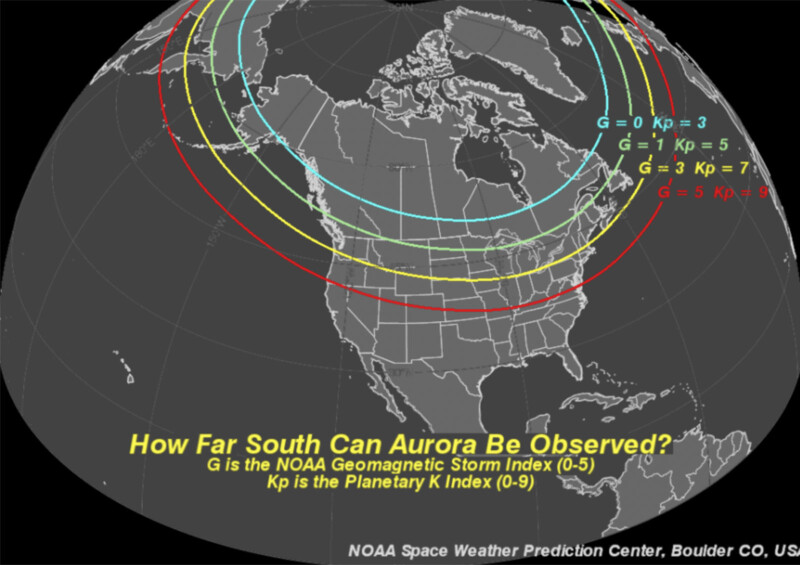
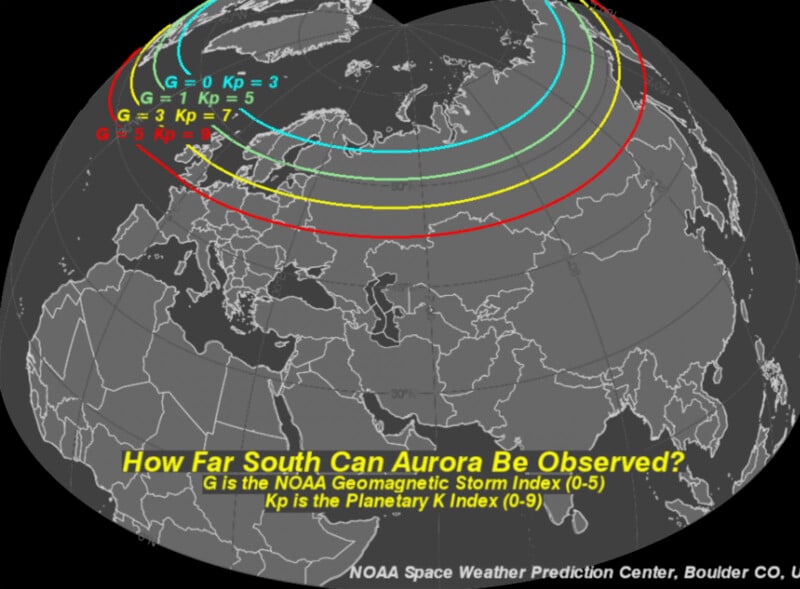
Of course, solar winds and geomagnetic storms are challenging to predict, so the resulting auroras are likewise unpredictable. There is no such thing as guaranteed northern lights. That said, the Geophysical Institute at the University of Alaska Fairbanks, another brilliant source for space weather information, predicts “High (++) activity) and a Kp index of 7 for December 1.
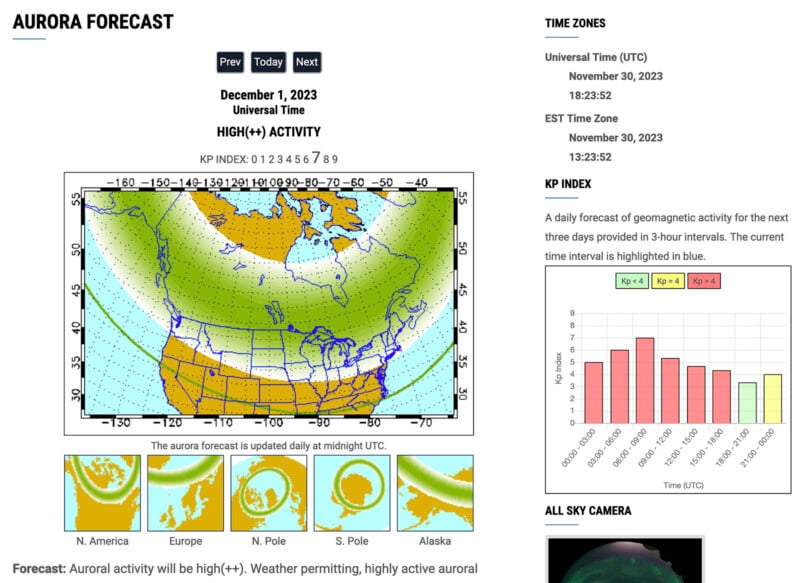
Photographers wanting to try their luck tonight and tomorrow may want to consider paying for SpaceWeather’s text alerts and keep a close eye on the UAF’s Geophysical Institute and NOAA’s Space Weather Prediction Center website. While even the best-laid plans can be disrupted by overcast conditions, an excessively bright Moon, and pure bad luck, good preparation will deliver photographers the best possible odds of capturing beautiful photos of the northern lights.
PetaPixel’s “How to Find and Photograph the Northern Lights” guide by Jason Parnell-Brookes is also an invaluable resource for finding dark skies, dialing in the optimal camera settings, and being in the best position to succeed when treated to stunning auroras.